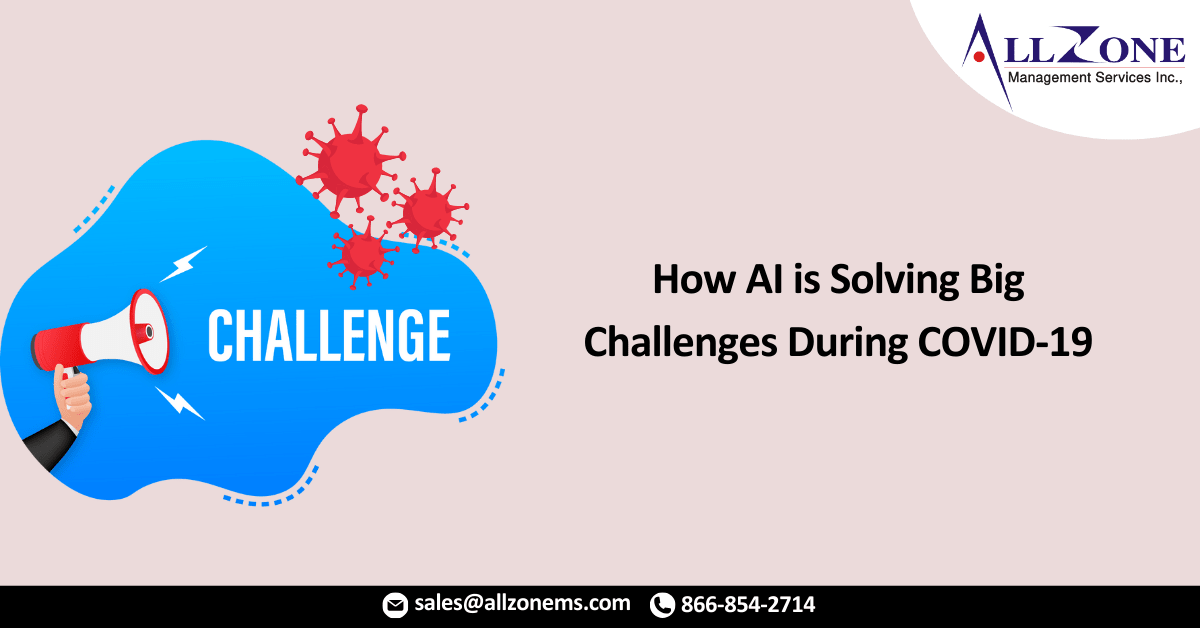Artificial intelligence is changing the way we think about healthcare during the COVID-19 pandemic, opening our eyes to new opportunities to use machine learning to draw useful conclusions faster.
Before COVID-19, one of the biggest challenges healthcare organizations faced was how to accelerate and scale their application of AI—clinically and operationally. Now, the use cases emerging during the pandemic are revealing AI’s potential for optimizing value.
Healthcare leaders are using AI in three significant ways to solve some of the biggest challenges they are facing amid the pandemic.
Eliminating Gaps in Care
It’s common for patients who are hospitalized with COVID-19 to have underlying health conditions, such as chronic illness, obesity or cancer. However, data regarding patients’ medical history or social determinants of health can be hard to come by in times of crisis. One analysis found that just 5.8% of patients hospitalized with COVID-19 in the first quarter of 2020 had data available related to their underlying health conditions and other risk factors.
AI has the power to match disparate medical records with a high degree of precision. This enables healthcare data scientists to improve their understanding of the conditions that put patients at risk for severe complications from COVID-19. For example, while physicians understood early on that diabetes, hypertension and obesity increased patients’ chances for severe illness, AI-fueled analyses have expanded the list of conditions that exacerbate risk. The more data insights that become available, the better the odds that care teams will know how to most effectively intervene on a patient’s behalf.
Predicting Where COVID-19 Will Spread—and When
When the coronavirus emerged in the U.S. on a wide scale this past spring, healthcare professionals scrambled for meaningful data to answer the questions: “When did the infections start—and where did they originate?” Health plans sought to understand how COVID-19 has affected their member populations, where potential hot spots exist and how to most effectively manage and triage care for vulnerable populations to reduce risk.
Today, AI analyses of claims data stretching back to November 2019, with careful review of claims for individuals with flu-like illnesses, have given data scientists the power to identify areas that are most likely to become COVID-19 hot spots up to 10 days in advance. With this insight, hospitals and public health agencies become better able to forecast demand for care and bring in the necessary resources to meet the needs of their communities.
For consumers, actionable intelligence stemming from AI-based claims clearly alerts them of their risk for contracting a severe case of COVID-19 based on where they live. These data, shared in the form of a relative risk score, help vulnerable populations better protect themselves by rigorously adhering to social distancing guidelines and care management plans.
Reducing Wasteful Spending in Healthcare
A JAMA study shows that 25% of healthcare spending could be considered wasteful. This suggests that in a $3.5 trillion healthcare system, up to $935 billion per year is wasted on overtreatment, failures in care delivery and care coordination, and overpayment. At a time when hospitals have taken a financial hit from the impact of COVID-19, AI’s ability to identify wasteful spending and stop excess spending before it starts will be vital to financial recovery.
For example, some health plans, such as Highmark, are using machine learning to look for spikes in COVID-19 claims by facility—especially facilities that have been under investigation for fraudulent claims in the past. With this information, investigators can dig deeper, searching for instances where claims with COVID-19 diagnoses may have been upcoded to increase reimbursement. Machine learning also flags suspect claims for review by health plan nurses and coding experts, such as claims where allergy tests or genetic tests are performed in addition to coronavirus testing.
Practical Approaches to Predictive Insight
Approaching AI innovation from the mindset of, “How can we target our use of AI in the right areas to solve our organization’s biggest challenges?” enables leaders to not only develop well articulated use cases for AI, but also to ensure they are using the right technology—from machine learning to predictive analytics to robotic process automation—to solve the challenge at hand. This value-based, highly focused view empowers healthcare organizations to leverage AI more effectively during COVID-19 and beyond.
For More Information: https://www.fiercehealthcare.com/tech/industry-voices-how-ai-solving-some-healthcare-s-biggest-challenges-during-pandemic

